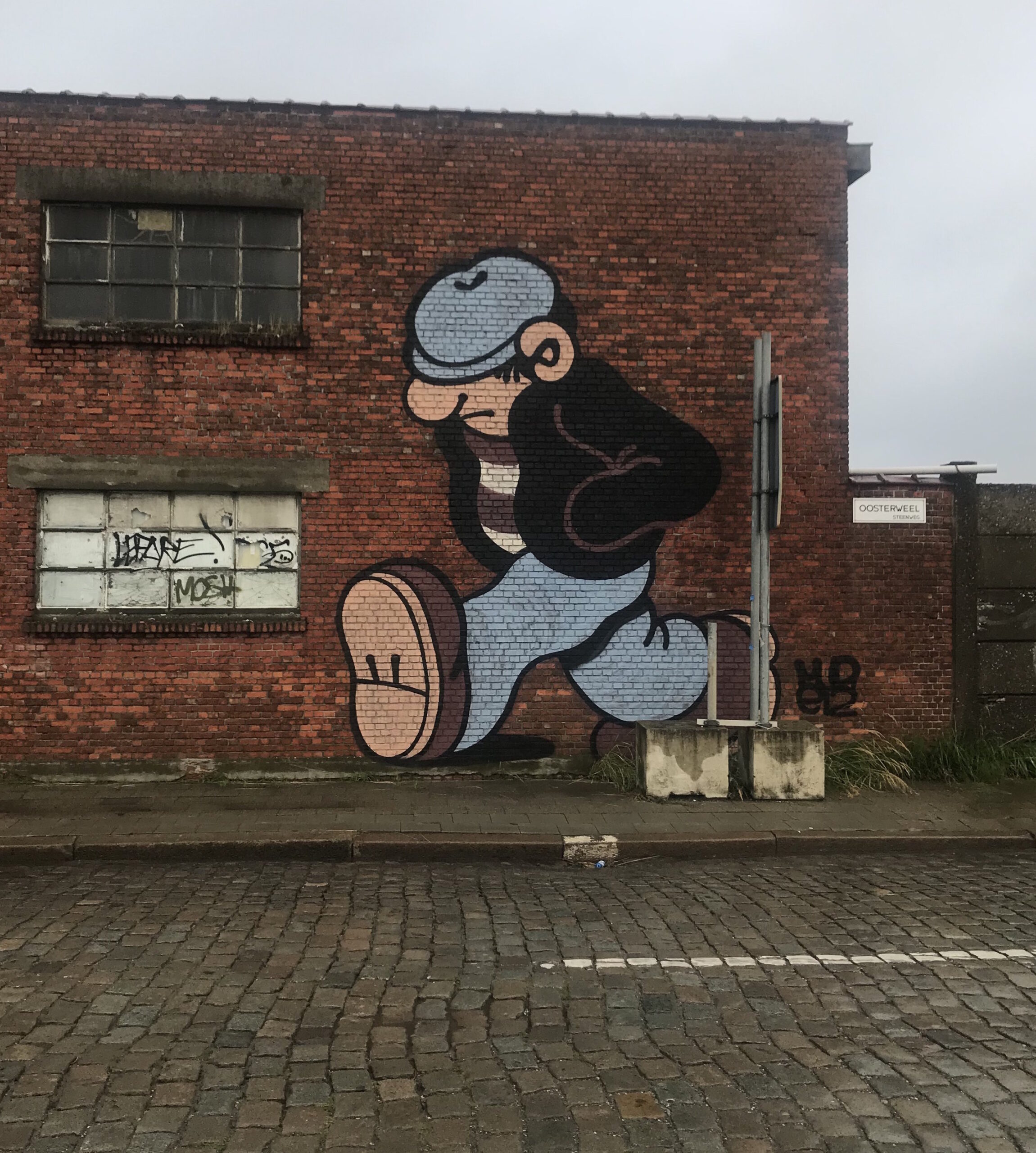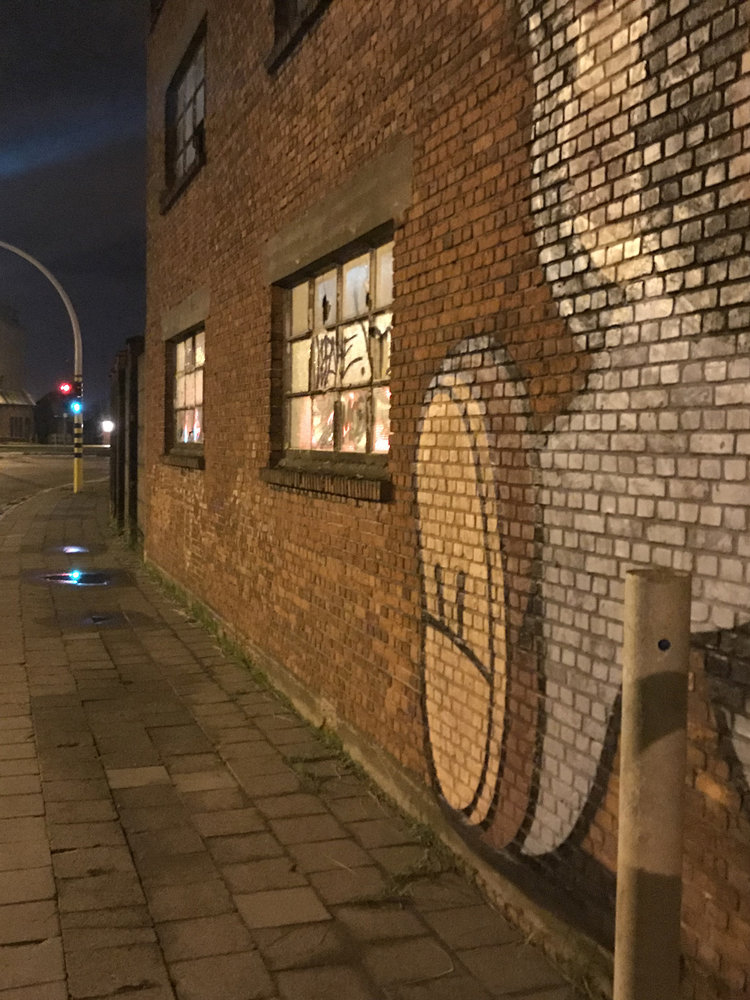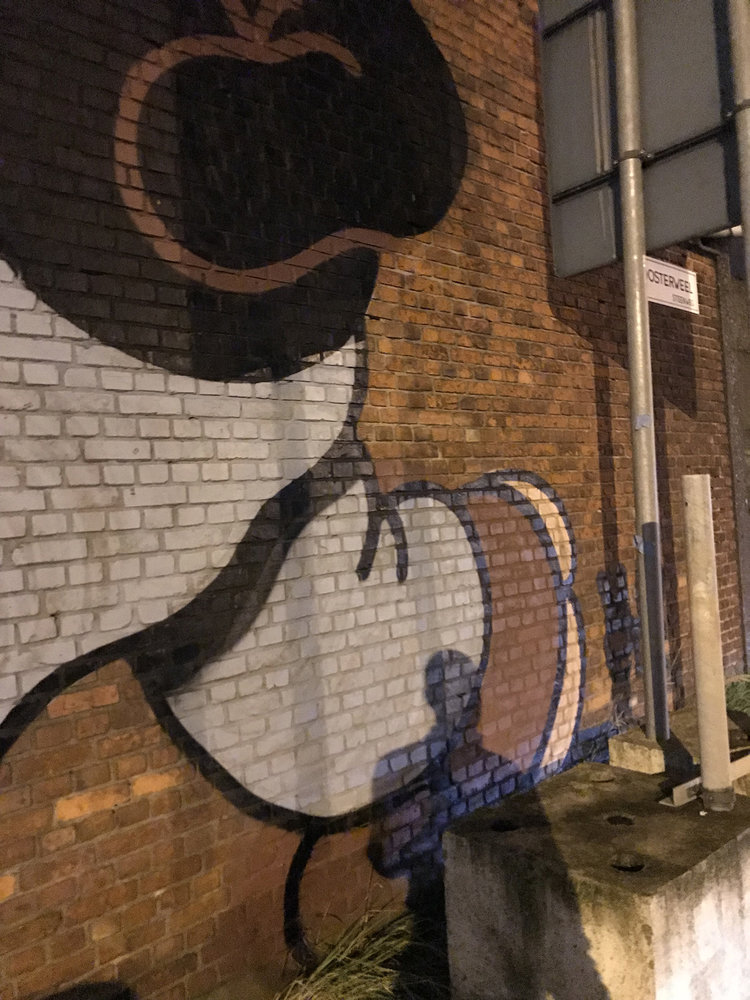In the twilight hours of a crisp autumn evening, Brazilian street artist Muretz stood before an imposing brick wall in Antwerp’s industrial district. The abandoned warehouse loomed silent and expectant, its weathered surface a blank slate for his imagination. Armed with just a few spray cans and a vision that had been brewing since his arrival in Belgium, Muretz prepared to transform this forgotten corner of the city.

The Port of Antwerp’s distant hum provided a rhythmic backdrop as Muretz began his clandestine work. His movements were deliberate and fluid, each stroke building upon the last to reveal a phantasmagorical character. The creature emerged from the brickwork with his alongated limbs and exaggerated features told stories of urban isolation and the struggle for identity in a rapidly changing world. Pale colors punctuated the composition, a stark contrast to the tones of the surrounding industrial landscape.
As dawn approached, Muretz lit a joint and walked away. The once-bare wall now displayed a giant figure that would stop passersby in their tracks. The artist melted into the awakening city, leaving behind no trace of his presence save for the artwork itself. In the days that followed, locals would speculate about the mysterious creature, unaware that they had been gifted a piece of São Paulo’s dirty graffiti scene, transplanted to the heart of Flanders.



